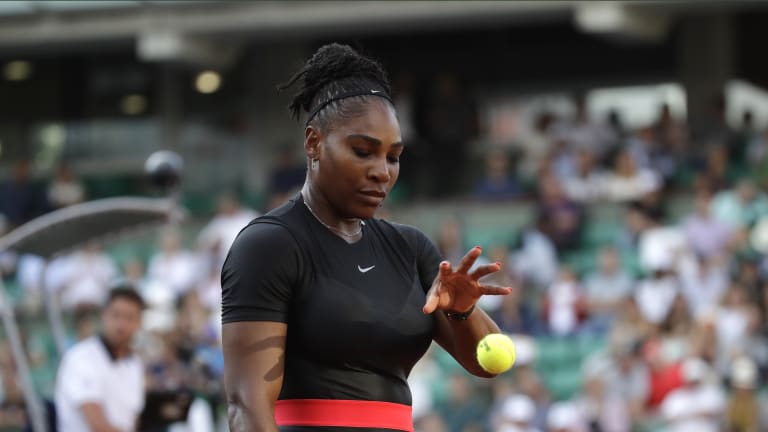The 2018 French Open ended with a Demolition Party: Tournament officials gave the media souvenir hard hats and let us graffiti the walls of the press rooms. They’ll be coming down, along with much of the rest of Roland Garros, over the next 12 months. Judging by the plans, something bigger, better, sleeker, and thankfully much larger will rise in its place in May 2019. Personally, I can’t wait to see it.
The men’s version of the event ended with another version of a demolition party: Rafael Nadal’s run to his 11th title. But this wasn’t a fortnight of upheaval; both the No. 1 seeds, Nadal and Simona Halep, held the trophies on the final weekend. Before we leave these two weeks behind and set off for the grass season, here’s a look back at five of the stories that defined the last days of the Old Roland Garros.
Looking back through the daily programs from the last two weeks at the French Open, I was surprised to see that the first one was dedicated to the ATP’s star of that now-bygone moment, Sascha Zverev. How quickly moments change. All eyes were on Zverev when this tournament began; he had won two warm-up tournaments and was an unlucky rain delay from beating Rafael Nadal in a third. When he blitzed his way through his first match, it looked like the 21-year-old German’s long-awaited Grand Slam breakthrough was upon us. But breakthroughs don’t typically happen on cue, and Zverev’s will have to wait.
In his next three matches, he fell behind two sets to one all three times, to significantly lower-ranked opponents. Zverev was lured into playing their games each time, and for long stretches he looked like a conventional baseline grinder, rather than the smooth-hitting 6’6” powerhouse he usually is. The fact that Zverev escaped all three times is a positive sign; he has learned, it seems, to stay in a best-of-five-set match, and even to use the format to his advantage. Hopefully he has also learned the consequences of using up all five sets on a regular basis, because he had little left against Dominic Thiem in the quarterfinals.
What should we make of Zverev’s Roland Garros campaign? On the one hand, the shine has come off him a little as the ATP’s next big thing; it was Thiem who made his first Grand Slam final instead. But Zverev did reach a major quarterfinal for the first time. He should probably chalk it up as a laborious baby step, and put it in the rearview mirror.
WATCH—Match point from Zverev's impressive win over Karen Khachanov in Paris:
